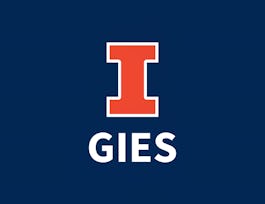This course will focus on capturing the evolution of interest rates and providing deep insight into credit derivatives. In the first module we discuss the term structure lattice models and cash account, and then analyze fixed income derivatives, such as Options, Futures, Caplets and Floorlets, Swaps and Swaptions. In the second module, we will examine model calibration in the context of fixed income securities and extend it to other asset classes and instruments. Learners will operate model calibration using Excel and apply it to price a payer swaption in a Black-Derman-Toy (BDT) model. The third module introduces credit derivatives and subsequently focuses on modeling and pricing the Credit Default Swaps. In the fourth module, learners would be introduced to the concept of securitization, specifically asset backed securities(ABS). The discussion progresses to Mortgage Backed Securities(MBS) and the associated mortgage mathematics. The final module delves into introducing and pricing Collateralized Mortgage Obligations(CMOs).



Term-Structure and Credit Derivatives
This course is part of Financial Engineering and Risk Management Specialization



Instructors: Garud Iyengar
Sponsored by InternMart, Inc
10,063 already enrolled
(56 reviews)
Recommended experience
Skills you'll gain
Details to know

Add to your LinkedIn profile
16 assignments
See how employees at top companies are mastering in-demand skills

Build your subject-matter expertise
- Learn new concepts from industry experts
- Gain a foundational understanding of a subject or tool
- Develop job-relevant skills with hands-on projects
- Earn a shareable career certificate


Earn a career certificate
Add this credential to your LinkedIn profile, resume, or CV
Share it on social media and in your performance review

There are 6 modules in this course
What's included
1 video3 readings
Welcome to week 2! This week, we will re-visit the fixed income instruments. So far we have been very comfortable with the notion of a fixed interest rate. In reality, however, interest rate is always evolving over time. Previously, we have seen that the evolution of stock prices can be modeled via multi-period binomial models or the Black Scholes model, but how do we capture the evolution of interest rate? Let us unfold the modeling of interest rate in this week. We will also see that all security derivatives have their equivalents in fixed income domains, such as options, forwards, futures and swaps. If you get stuck on the quizzes, you should post on the Discussions to ask for help. (And if you finish early, I hope you'll go there to help your fellow classmates as well.)
What's included
12 videos1 reading4 assignments
Welcome to week 3! This week, we will start with an important practice in real-life financial engineering - model calibration. The mathematical models are no good if they do not capture the regularities in the financial markets. In order to ensure that our models are useful, we need to search for model parameters that describe the current market conditions. You might find it very helpful to review the optimization methods in the pre-requisite materials of Introduction of Financial Engineering and Risk Management.
What's included
8 videos2 readings3 assignments
Welcome to week 4! This week we will introduce credit derivatives, a very powerful family of derivative products that are partially responsible for the Financial Crisis in 2008. As always, if you get stuck on the quizzes, you should post on the Discussions to ask for help. (And if you finish early, I hope you'll go there to help your fellow classmates as well.)
What's included
5 videos3 assignments
Welcome to week 5! This week, we will focus on a brand new set of financial products - mortgage-backed securities. Mortgage-backed securities are constructed from mortgages, which are common cash flows occurring in the housing market. Through a detailed case study of mortgage-backed securities, we will touch upon the important concept of securitization, i.e. how to package common cash flows into securitized products. We will explore a specific kind of financial product - Collateralized Mortgage Obligations (CMO). As always, if you get stuck on the quizzes, you should post on the Discussions to ask for help. (And if you finish early, I hope you'll go there to help your fellow classmates as well.)
What's included
10 videos1 reading5 assignments
Welcome to week 6! This week, we will explore a specific kind of financial product - Collateralized Mortgage Obligations (CMO). We will also get some experience in pricing those securities. Finally, we will apply the knowledge we learned through the course by working on a quiz and a practical assignment. If you get stuck on the problems, you should post on the Discussions to ask for help. If you finish early, I hope you'll go there to help your fellow classmates as well.
What's included
1 reading1 assignment
Instructors



Offered by
Why people choose Coursera for their career




Learner reviews
56 reviews
- 5 stars
73.21%
- 4 stars
16.07%
- 3 stars
5.35%
- 2 stars
0%
- 1 star
5.35%
Showing 3 of 56
Reviewed on Feb 25, 2022
Very nice course having both theoretical depth and also practical depth. So appreicated to be able to learn from knowlegable instructors with just a little money. Great job!
Reviewed on Oct 6, 2022
Course was quite informative.
Reviewed on Jul 17, 2023
Very well-explained concepts with perfect slides and assignments!
Recommended if you're interested in Business

University of Illinois Urbana-Champaign

University of Geneva

Duke University

Open new doors with Coursera Plus
Unlimited access to 10,000+ world-class courses, hands-on projects, and job-ready certificate programs - all included in your subscription
Advance your career with an online degree
Earn a degree from world-class universities - 100% online
Join over 3,400 global companies that choose Coursera for Business
Upskill your employees to excel in the digital economy



